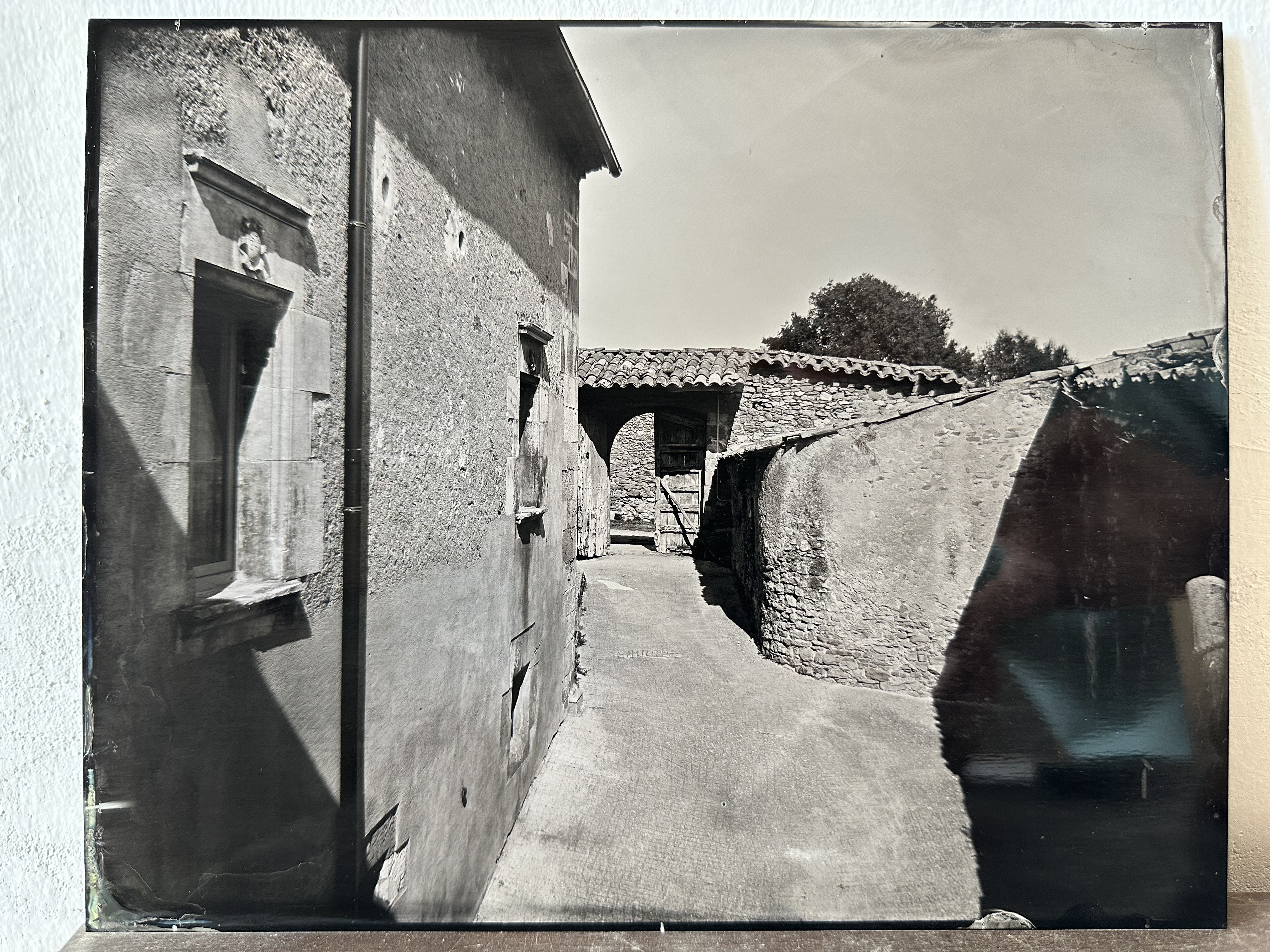I have recently rediscovered this wonderful thread. Let me start by thanking all the people that has contributed here.
I think, however, that the use of glycerin to postpone fixing or washing when working in the field has not yet been covered.
I have read a few things around the web, and I have tried some, but I am not completely sure if I'm doing
things correctly or if I could do other things.
In the last few days I've been doing the following. After exposing the plate, I develop it and give it a quick rinse.
Then I flow the plate with a mixture of equal parts of glycerin and distilled water. I leave the liquid on top of the plate
for a couple of minutes, drain it and finally I place the plate horizontally in a black box(*). Next day, once at home,
I wash the plate(s) and fix them. Usually, I also redevelop them. This procedure seems to work fine.
The only drawback is that, since the plates are only developed and not fixed and I don't have enough experience yet
to judge the exposition from the unfixed plates, I often find that the plates could have benefited from a longer exposure.
Then, my questions are the following.
1) Is the procedure, described above, correct? In particular, I am not sure if only flowing the plate with glycerin is the right
thing to do. It seems to work, though.
2) Could I develop, fix and, after a quick rinse, flow the plate with the above procedure? In this way, at least I could better
judge the exposition and leave the rest of the steps (final rinse and intensification) to the next day.
I have found that fixing and washing plates in the field is rather impractical.
3) Has anyone compared two identically exposed and developed plates, one of them fixed in the usual manner and the other
one flowed with glycerin and fixed the next day? Are they identical or the arrested fixing has some effect on the result?
I will do the test next week, but maybe someone has already done it.
(*) The black box is a dedicated box, light tight, designed to store plates horizontally.



 Reply With Quote
Reply With Quote


Bookmarks